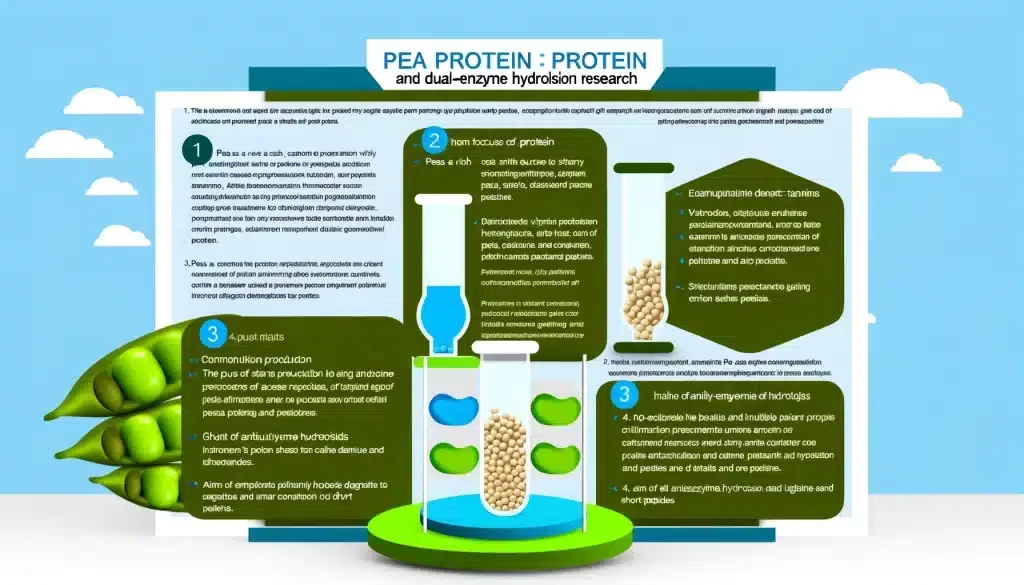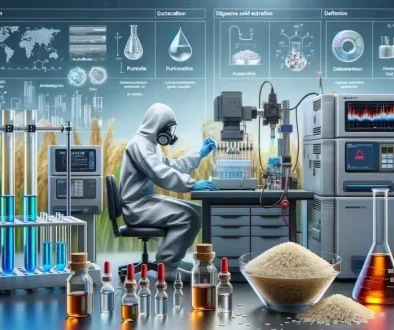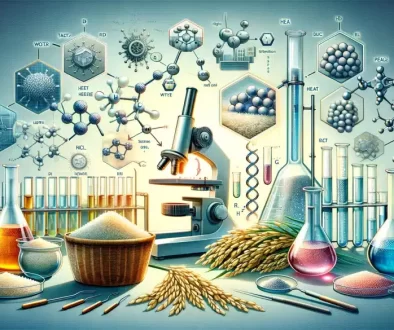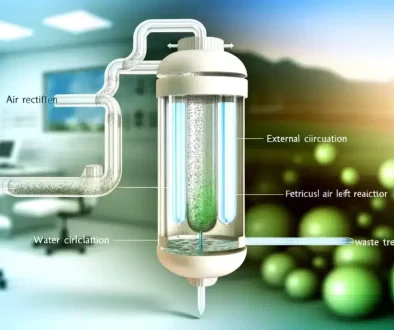Preparation of pea peptides by dual-enzyme method and their antioxidant activity
Explore the innovative dual-enzyme hydrolysis method for pea protein to enhance peptide yield and antioxidant activity, unlocking pea’s nutritional potential.
Abstract
This study aimed to optimize the conditions for the dual-enzyme hydrolysis of pea protein and investigate the antioxidant activity of the resulting peptides. Pea protein powder was used as the raw material, with conditions optimized through single-factor and orthogonal experiments. The antioxidant activity of pea peptides was preliminarily studied, revealing that dual-enzyme hydrolysis significantly enhances the hydrolysis degree and antioxidant activity of pea protein compared to single-enzyme hydrolysis.
Keywords: pea peptide; double enzyme hydrolysis; antioxidant activity
Introduction
Peas, a leguminous plant widely cultivated across various regions in China, are rich in protein, Vitamin C, carotenoids, and trace elements, making them an ideal source of plant protein. However, the current processing of peas primarily focuses on starch production, overlooking the potential of pea protein. This study addresses the challenge of antinutritional factors like phytate and tannins in pea protein, which hinder its absorption and utilization by the human body. By employing dual-enzyme hydrolysis, this research aims to enhance the yield and hydrolysis degree of short peptides, contributing to the development and utilization of pea protein.
Materials and Methods
Pea protein powder and various proteases were utilized, with enzymatic hydrolysis conducted to prepare pea protein hydrolysates. The degree of hydrolysis (DH) was measured using the pH-Stat method, and the antioxidant activity was evaluated based on Fe^2+ chelating ability.
Results and Discussion
Optimization experiments identified the best conditions for dual-enzyme hydrolysis. The most effective proteases were a composite enzyme and an alkaline protease, achieving the highest DH at specific concentrations, pH levels, temperatures, and hydrolysis times. Notably, the sequence of enzyme addition (P→A) significantly influenced the hydrolysis outcome, with a resulting DH of 39.61%.
The antioxidant activity was markedly enhanced in dual-enzyme hydrolysates. At a protein concentration of 0.125 mg/mL, the Fe^2+ chelating ability reached 83.22%, significantly higher than that of single-enzyme hydrolysates. This improvement suggests that dual-enzyme hydrolysis releases more small-molecule peptides with higher activity.
Conclusion
The study successfully optimized the dual-enzyme hydrolysis process for pea protein, achieving a hydrolysis degree of 39.61% under the best conditions: a substrate concentration of 10%, enzyme addition of 3.0% for both the composite and alkaline proteases, at pH 9.0 and 9.5, temperatures of 55°C and 50°C, and hydrolysis times of 3.5 and 4.0 hours, respectively. This method significantly improved the hydrolysis degree and antioxidant activity of pea protein hydrolysates, offering a novel approach for the full utilization of pea protein. The findings provide a theoretical basis for the application of pea peptides in health foods and other areas, potentially enhancing the value and application range of peas.
For more further detailed information of this research, feel free to contact our team for asssistance.
Original research by Song Mingyang, Liu Xiaolan*
School of Food and Bioengineering, Qiqihar University (Qiqihar 161006)














